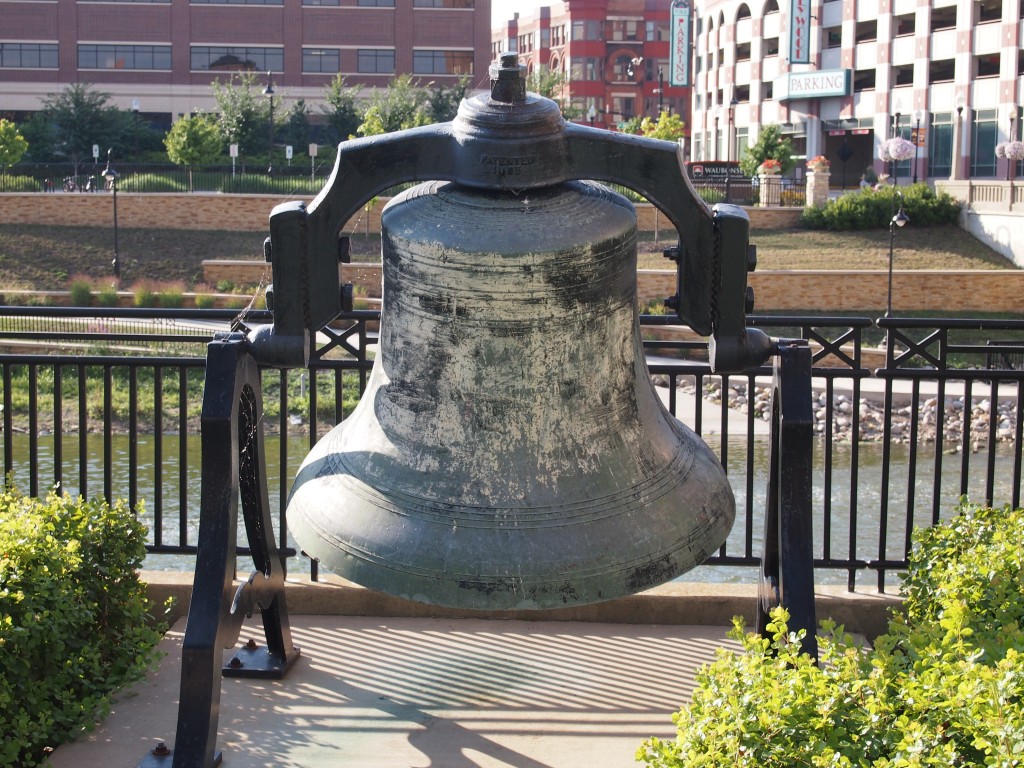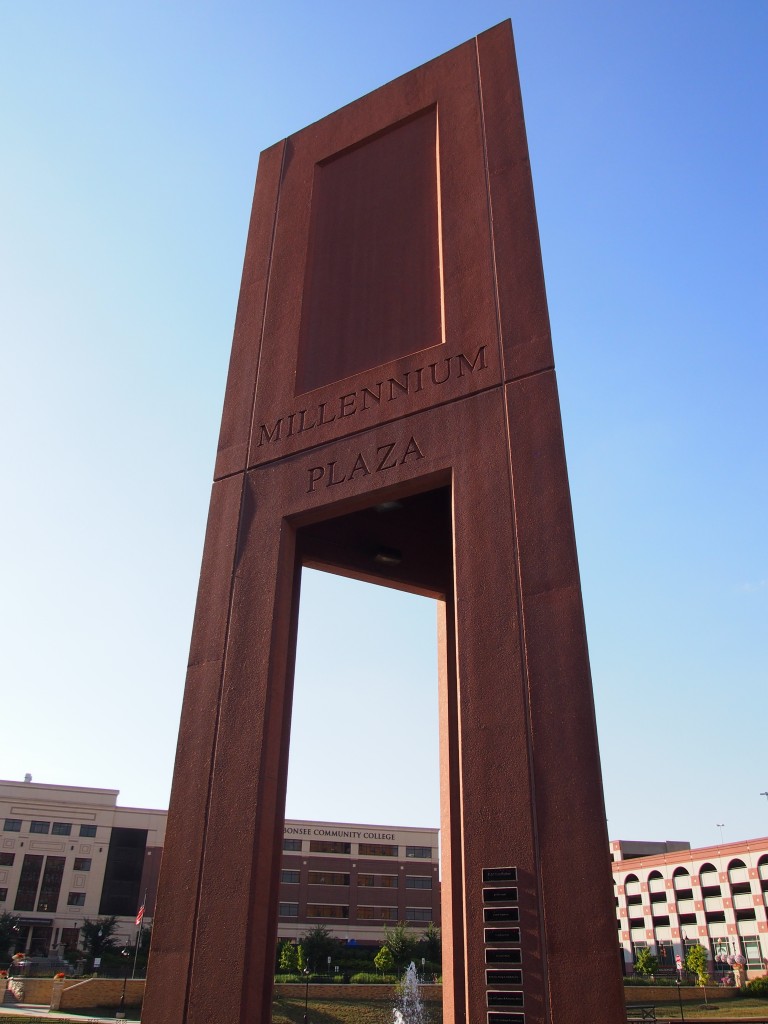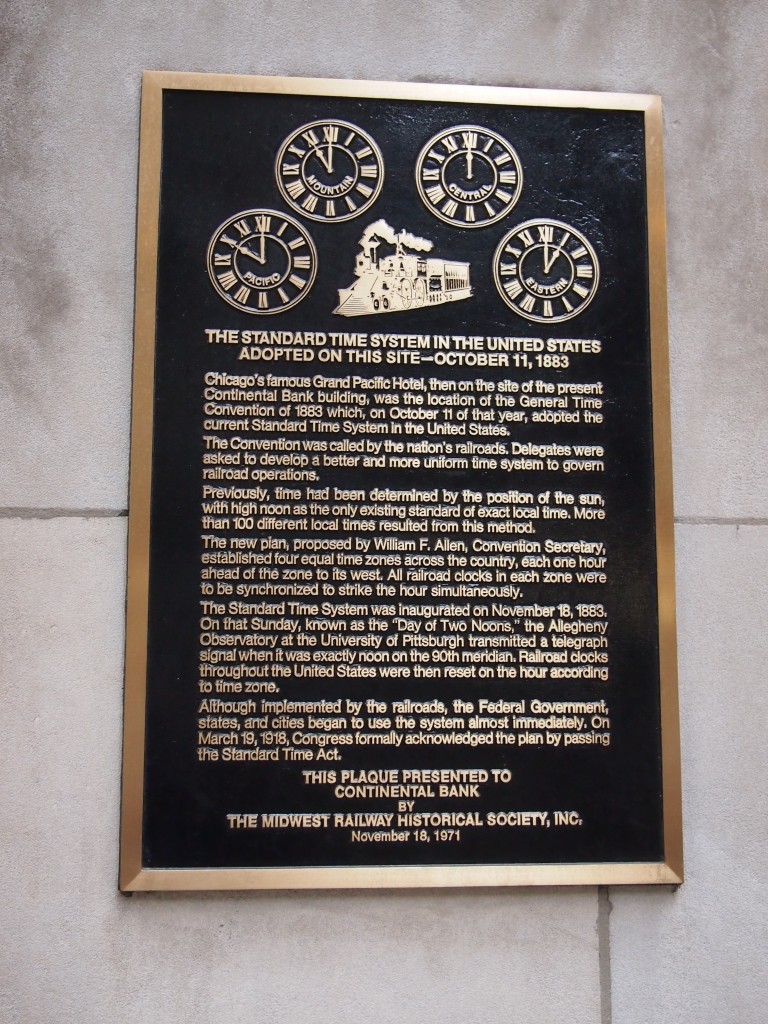Behind the former Leland Hotel in Aurora is a spot called Millennium Plaza, dedicated on January 1, 2000. It has a nice view of the Fox River, but otherwise isn’t a very inspiring public space. There’s a large bell.
 I looked around, but there’s no clue about the bell’s history or what it’s doing there. No doubt it has a history, and maybe an interesting one tied to Aurora’s story. Maybe the municipal committee responsible for creating the plaza ran out of money when it came time to commission a plaque or even a small sign for it.
I looked around, but there’s no clue about the bell’s history or what it’s doing there. No doubt it has a history, and maybe an interesting one tied to Aurora’s story. Maybe the municipal committee responsible for creating the plaza ran out of money when it came time to commission a plaque or even a small sign for it.
A tower rises over the plaza.
 Not a color or shape I would have chosen. But there it is. Apparently, if you stand at a certain spot not far away on a clear night, the tower will guide your eye to Polaris. The committee found money to add a plaque that explains that. Even though the plaque has been scratched up by bush-league vandals, I’m able to quote it at length.
Not a color or shape I would have chosen. But there it is. Apparently, if you stand at a certain spot not far away on a clear night, the tower will guide your eye to Polaris. The committee found money to add a plaque that explains that. Even though the plaque has been scratched up by bush-league vandals, I’m able to quote it at length.
Millennium Tower stands as Aurora’s Salute to the third millennium. It has brought the business and private sectors of the community together to leave a lasting gift to future generations of Aurora citizens.
Millennium Tower is constructed in a triangular form, with each side having its own plaza representing the past, present and future of Aurora. We enter the tower at Present Plaza, moving to the south and down, we stand on Past Plaza, and to the north and up, we stand on Future Plaza.
I have to say at this point that just wandering around the site as a casual visitor, there’s no sense that it’s divided into three parts, much less ones that sound so temporally disorienting. And not to pick nits — actually, I like picking this kind of nit — what’s the difference between the business and private sectors?
The tower’s orientation is true north. The upper angle of the tower is at 42.5 degrees. Standing on the granite stone at the entrance to the tower, one can sight at the peak of the tower to the North Star.
As the North Star has lead mankind into the future, so today we, the citizens of Aurora, dedicate Millennium Tower to the future generations of Aurorans to guide you into the future millenniums.
Wait, what? It’s interesting that the tower points to Polaris, I guess, though it’s one of easiest stars to find in the sky — the easiest — if you happen to be in the Northern Hemisphere. But what’s this about the North Star leading mankind into the future? As important as Polaris might be to navigation, and even considering that it shows up occasionally as a symbol of constancy in literature, what’s that supposed to mean?
Also, and here’s another nit, I suspect the planners of the tower had never heard of the precession of the equinoxes. That’s something that moves along at a millennial pace. We won’t live to see it, of course, but poor old Polaris won’t be the pole star forever — not even by the beginning of the fifth millennium.
Aurora itself might not last so long, but you never know. Whatever its current troubles, Damascus (for example) has been around a really long time, and probably has thousands of years to go. Aurora might even be a major city someday — where was it that became the capital of a large new empire in the fourth millennium in A Canticle for Leibowitz? Texarkana.
